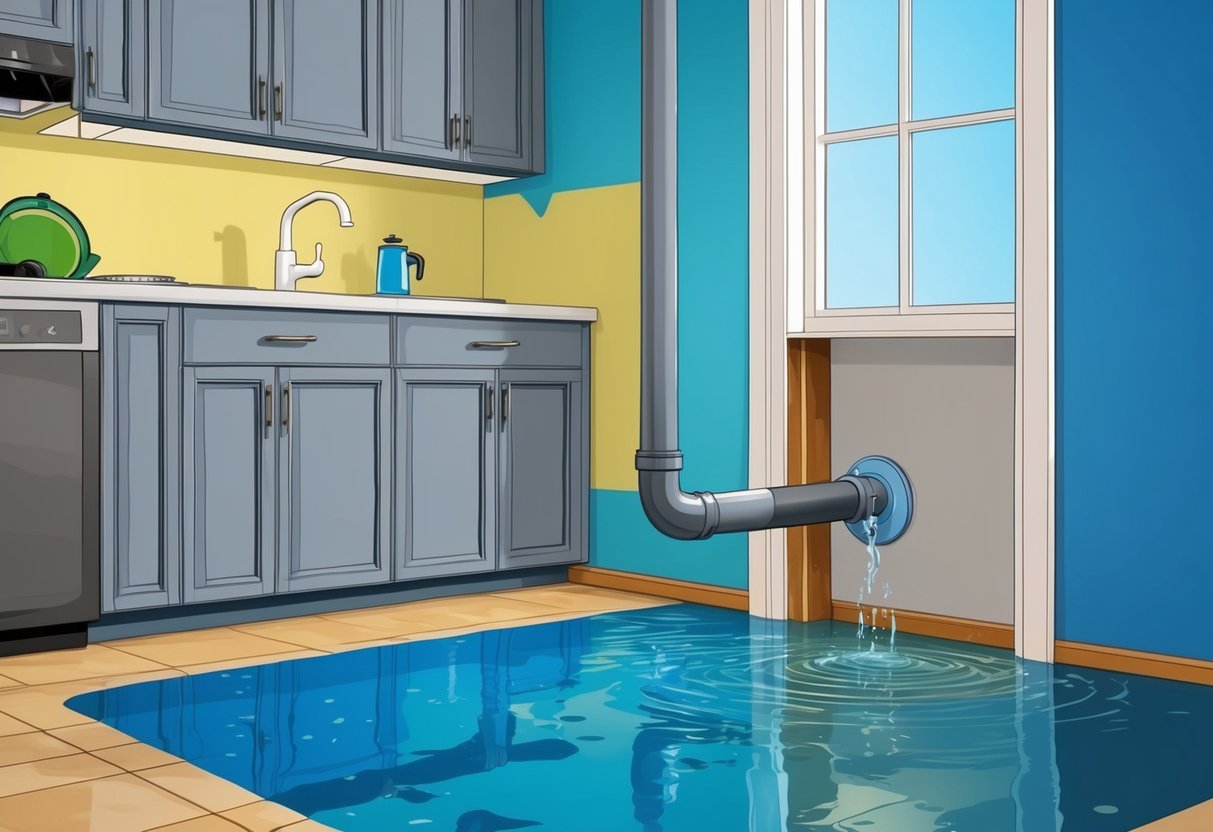
Monitoring Unexplained Changes in Energy Efficiency
Water leaks can cause unexpected increases in utility bills, even when daily habits remain unchanged.
If the water bill rises sharply without an obvious reason, a concealed leak may be the cause.
This is especially true if water usage patterns have not changed.
Leaks around hot water pipes or the water heater can lead to additional energy waste.
Heating systems may work harder to maintain set temperatures if excess water is present, reducing overall efficiency.
Reduced water pressure at fixtures is another sign, particularly if accompanied by any of the above indicators.
Tracking water meter readings when no water is in use is a practical way to confirm suspicions.
If the meter continues to move, a hidden leak is likely.
For further warning signs such as reduced pressure and increased consumption, see the list of hidden water leak indicators in your home.
Proactive Leak Detection Techniques
Proactive home maintenance measures help homeowners detect hidden water leaks early, reducing the risk of serious water damage.
By using a combination of regular inspections and modern technology, properties are better protected from costly repairs.
Regular Inspections for Early Warning Signs
Routine checks on plumbing and fixtures are one of the most effective ways to catch leaks before they escalate.
Homeowners should visually inspect exposed pipes under sinks, behind appliances, and in basements for any signs of moisture, corrosion, or mineral buildup.
It is important to examine faucets, toilets, and water heaters for drips or puddles.
Conducting a simple toilet dye test—adding a few drops of food coloring to the toilet tank and checking the bowl after 30 minutes—can reveal leaks that might otherwise go unnoticed.
Monitoring the water meter before and after a period of no water use can also indicate hidden leaks if there is any unexplained change.
Early detection through these regular inspections supports overall leak detection efforts and keeps the home in optimal condition.
Using Technology to Detect Hidden Problems
Advanced technology can spot leaks behind walls or under floors that visual checks might miss.
Tools such as electronic leak detectors, infrared thermal cameras, and moisture meters allow for precise detection of moisture without causing damage to the property.
Smart water leak detectors, placed in areas prone to leaks like the laundry room or bathroom, send instant alerts to a homeowner’s smartphone if unusual moisture is detected.
Professional leak detection services often use acoustic sensors to listen for hidden leaks in pipes embedded in concrete or underground.
Investing in these proactive leak detection devices enhances home maintenance and ensures small problems are addressed well before they result in water damage.
Roofing Maintenance Strategies
Preventing roof leaks and avoiding expensive repairs relies on regular inspections, proactive upkeep, and early action when problems arise.
Focusing on key elements such as roofing materials, shingles, and flashing dramatically reduces the risk of water damage from hidden leaks.
Inspecting and Maintaining Roofing Materials
Regular roof inspection is crucial for detecting early signs of leaking and water intrusion.
Homeowners should check both the outside and inside of the roof, paying close attention to roofing materials such as shingles, tiles, or metal panels.
Look for any warping, discoloration, granule loss, or unusual sagging.
Scheduled cleaning of roof surfaces and gutters can help prevent water buildup and moss growth, which may degrade materials and lead to leaks.
Annual maintenance ensures longevity for the entire roofing system and reduces the likelihood of hidden water intrusion.
Detailed inspections might require climbing onto the roof, but for safety, visual checks from a ladder work for most homes.
If anything unexpected is spotted, such as pooled water or deteriorating sections, consult a professional to prevent complications and further damage.
More on maintenance can be found at Family Handyman’s tips.
Identifying Damaged or Missing Shingles
Broken, curled, or damaged shingles are a leading cause of roof leaks.
During a roof inspection, look for missing, cracked, or loose shingles, as these create direct openings for water to enter.
High winds, falling debris, and regular aging often damage shingles.
Check for pieces of shingle in gutters or around the yard, as this could indicate advanced wear.
Even one missing shingle can allow rainwater beneath the roofing materials, putting the underlayment and interior at risk.
Quick repairs are essential.
Missing shingles should be replaced as soon as possible with new ones that match in size and type.
Delaying replacement allows water to seep further into the structure.
For more details, This Old House provides insights on spotting and fixing roof issues.
Examining Flashing and Vulnerable Areas
Flashing is metal or another durable barrier installed around chimneys, vents, skylights, and roof valleys.
Its primary job is to seal joints and edges where water might penetrate.
Improperly installed or corroded flashing is a common source of leaks.
Homeowners should routinely inspect these vulnerable areas for cracked sealant, rust, or separation from the roofing material.
Areas with complex shapes—such as roof valleys or junctions—deserve extra attention since water naturally channels there.
Seal any gaps or repair loose flashing immediately to prevent leaks.
Waterproof roofing caulk or tape can provide a short-term solution.
Professional roofers can replace failing flashing for long-term protection, minimizing water intrusion risks.
Regular attention to these details helps defend the home’s most exposed boundaries.